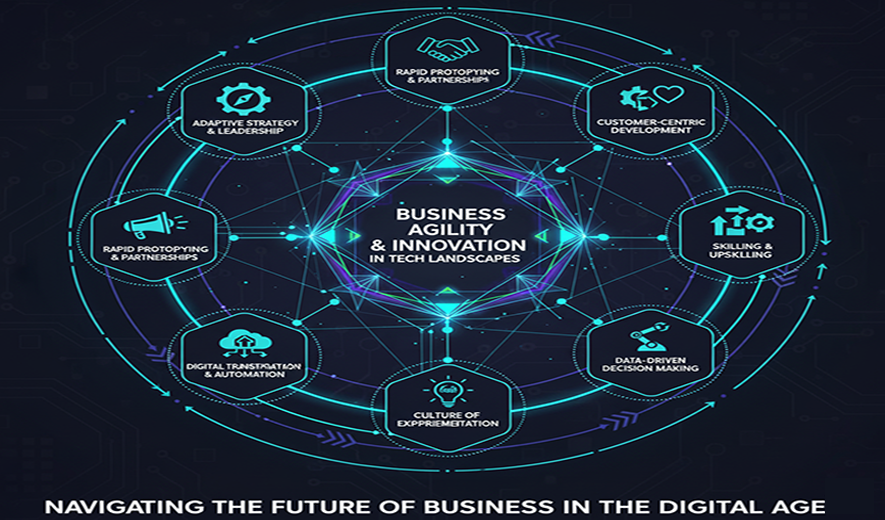
How Businesses Can Stay Agile & Innovative in Fast
To remain agile and innovative in a fast-changing tech landscape, businesses must adopt a holistic strategy that combines technological adoption with a mindset of continuous adaptation and a culture that supports experimentation. This involves fostering flexible organizational structures, leveraging data for rapid decision-making, and investing strategically in both new technology and talent development.
Cultivating an agile mindset and culture
A culture of agility and innovation provides the foundation for adapting to technological disruption.
- Empower cross-functional teams: Break down internal silos and create small, autonomous, cross-functional teams (often referred to as "squads" in the agile methodology) that are empowered to make quick decisions. This decentralized decision-making allows for faster responses to market changes without extensive top-down approvals.
- Embrace continuous learning: Instill a "growth mindset" throughout the organization, where employees view new technologies not as threats but as opportunities to learn and develop. Companies should provide continuous training and upskilling programs to keep their workforce's skills relevant and equip them with the confidence to use new tools.
- Foster a risk-tolerant environment: Create a safe space for experimentation and calculated risk-taking by emphasizing that failure is a learning opportunity, not a punishment. This encourages employees to test new ideas and approaches without fear, which is essential for driving innovation.
- Encourage intrapreneurship: Reward and recognize employees who champion new ideas and initiatives from within the company. This fosters a sense of ownership and inspires the entire workforce to contribute to innovation.
Using technology and data strategically
Instead of chasing every new trend, focus on how emerging technologies can solve specific business problems and enhance agility.
- Adopt agile methodologies: Apply agile frameworks like Scrum and Kanban beyond software development to manage projects and respond to changing priorities more efficiently. These iterative approaches prioritize customer satisfaction and continuous delivery.
- Leverage AI and data analytics: Use artificial intelligence (AI) and machine learning to analyze large volumes of data in real-time. These insights can inform strategic decision-making, anticipate market trends, and personalize customer experiences. AI-powered automation can also streamline repetitive tasks, freeing employees for more strategic work.
- Invest in flexible cloud infrastructure: Moving to cloud-based systems improves scalability, security, and flexibility. Cloud technology allows employees to access data and applications from anywhere, enabling greater adaptability and business continuity.
- Focus on cybersecurity: As technology evolves, so do cyber threats. Investing in robust, AI-driven cybersecurity measures is critical for safeguarding company data, protecting customer information, and building long-term resilience.
Building a responsive and resilient business model
Agile businesses are not static but continuously evolve to stay ahead of disruption.
- Prioritize customer-centricity: Place the customer at the center of innovation efforts by continuously gathering feedback to understand their evolving needs and pain points. This ensures that new products and services are relevant and valuable.
- Pursue intentional innovation: Align innovation strategies with long-term business goals rather than investing in technology for its own sake. This focused approach ensures resources are allocated to initiatives that will have the maximum impact.
- Form strategic partnerships: Collaborate with tech startups, research institutions, and even competitors to gain access to new technologies, expertise, and fresh perspectives. These partnerships can accelerate growth and lead to breakthrough innovations.
- Create adaptable operational models: Implement flexible organizational structures and processes that can be quickly reconfigured in response to market changes. This includes modernizing legacy systems and embracing technologies that enable more fluid, iterative development.
